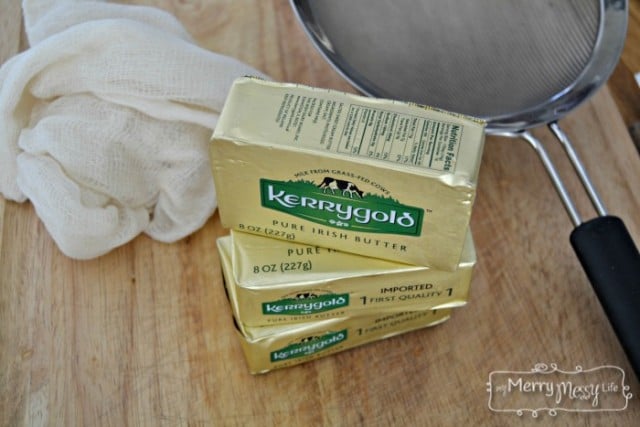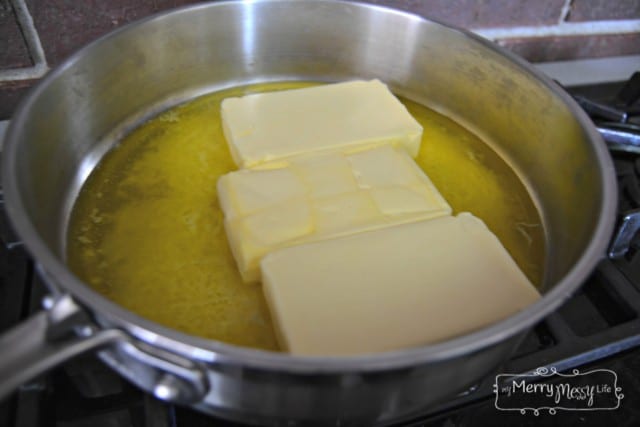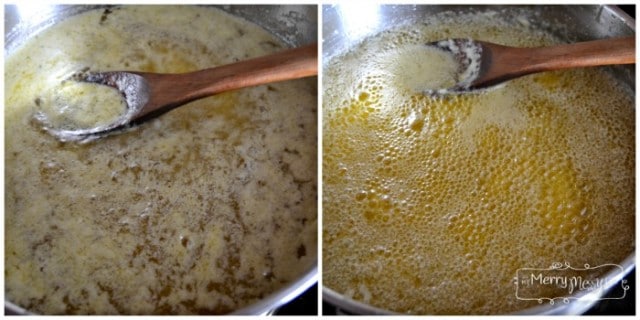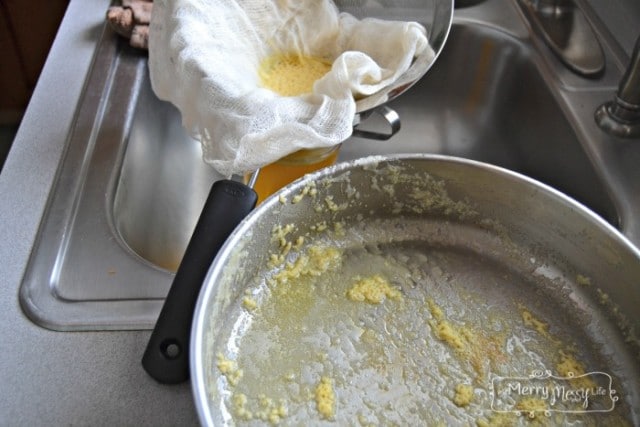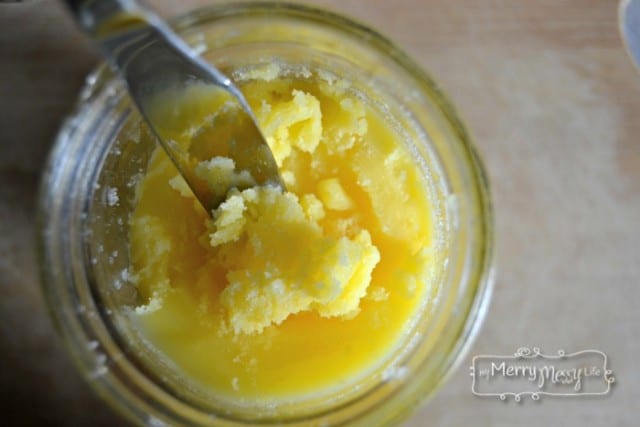How To Make Ghee – Easy Tutorial
Ever heard of ghee? If you haven't, it might sound like some strange baby word, but it's actually a healthy and versatile cooking fat that is super easy to make yourself at home! It has the benefits of butter without the casein and protein that aggravate many digestive systems. It's also-known-as clarified butter.
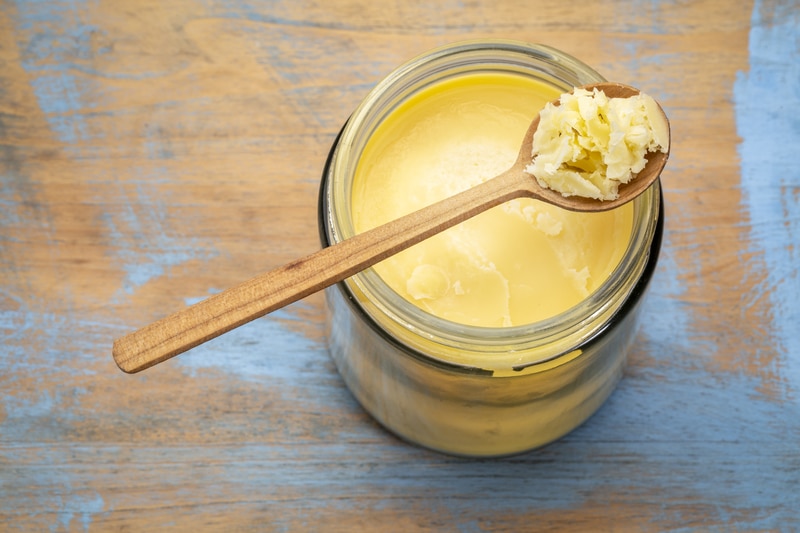
I suppose you could say I'm a bit fat-obsessed. Some folks collect antiques, I collect fats. I posted previously about one of my favorite fats, lard, in this easy tutorial. Now I'd like to share another one of my favorite fats, ghee. Like lard, ghee is a healthy and versatile cooking fat that is super easy to make yourself. Ghee is a golden, buttery, and delicious cooking fat that I absolutely love to use in my real foods kitchen. Let's get started on how to make it!
What is Ghee?
Most folks have heard of clarified butter. Clarified butter is butter that has been cooked down to remove some of the milk solids. Ghee takes it a step further with longer simmering to remove most (if not all) of the milk solids giving it a unique nutty, rich taste and healthy properties. Ghee has traditionally been used in Indian cooking and is becoming very popular in the real food community.
Is Ghee Healthy?
Since simmering removes most of the milk solids it can be called (mostly) dairy-free. Dairy-free butter! But like anything, you have to try it for yourself to see how you react. I have been dairy free for about three years and find that I do just fine with ghee. That tells me that my method successfully removes the majority of milk proteins/solids which is where the casein protein is located. Casein is what most folks with a dairy allergy or intolerance have issues with. Ghee made from grass-fed butter creates a product of containing vitamins A, D, E, K as well as CLA (conjugated linoleic acid), an essential fatty acid.
Ghee also touts a higher smoke point than regular butter. A higher smoke point means that it can be heated to a higher temperature without degrading and becoming inflammatory. Butter has a smoke point of about 325F-375F whereas ghee typically has a smoke point between 400F-500F.
How Do I Use Ghee?
Ghee can be used in place of butter in most any recipe. It has a more dense, almost grainy texture in solid form than butter so it's best melted a bit if it's going to be used as a spread. I love to use it to pour over veggies before roasting, blend into whipped sweet potatoes and add to soups and curries for an tasty deep flavor boost. It can also be used in place of most any fat for baked goods.
How Do I Make Ghee?
It's one of the easiest things to do and is a great way to save money in your real foods kitchen. Let's get started.
Gather your supplies:
- Butter (Grass-fed is best. Salted or unsalted works just fine)
- Large saute pan
- Cheesecloth
- Wooden spoon for stirring
- Metal strainer
- Metal funnel
- Glass container
This same method can be used to make ghee from any amount of butter. Just be sure that your pan is large enough to hold the butter and give it a bit of room to move around. I do three packages at a time because A)that's how I buy it from Costco and B)we really love to eat ghee.
Unwrap your butter (room temp or cold is fine) and add it to your pan. Turn the heat on low and let the butter slowly melt down. Enjoy the fact that now your entire house smells like butter. Crave popcorn for the rest of the day.
As the butter melts it will start popping and sputtering. I like to give it a gently stir ever few minutes just to help it along. You will see a foam rise to the top. If you stir you can see the solids sinking to the bottom. The photo on the left below shows what this looks like. After a certain time period you'll see it start to look more like the photo on the right. That's when you know it's done. The foam will have sunk to the bottom leaving the yellow liquid on top. I simmered this butter about 12-15 minutes.
Next, you'll strain out the solids. Lay your cheesecloth (double it up) in your fine mesh strainer and pour through into a glass container of your choice. I like to use mason jars. You can see all the milk proteins left behind in the pan.
Allow the ghee to cool completely then store in the fridge. I like to take it out of the fridge to warm up a bit before I want to use it so that it will be more spreadable. Or if you like, you can warm some in a saucepan to liquefy it.
I hope you give ghee a try! Let me know how you like it!
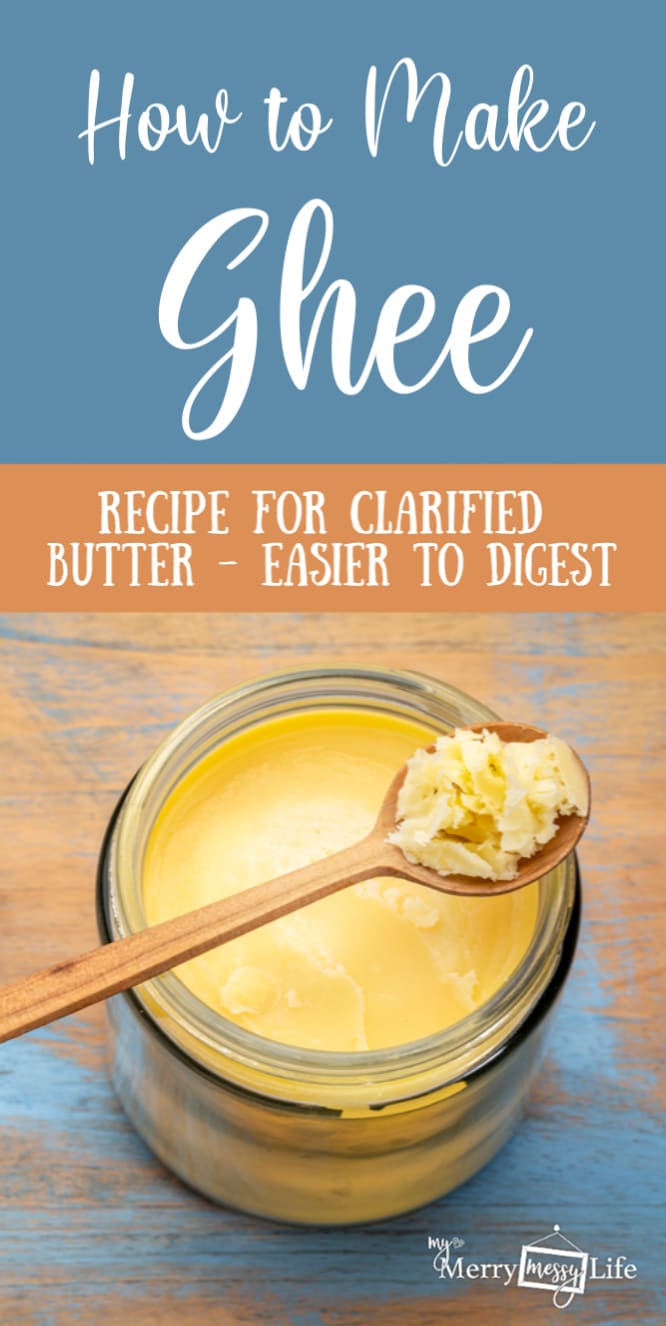
[optin-monster slug=”xs2yggdkacqf5ww9fqqm”]

